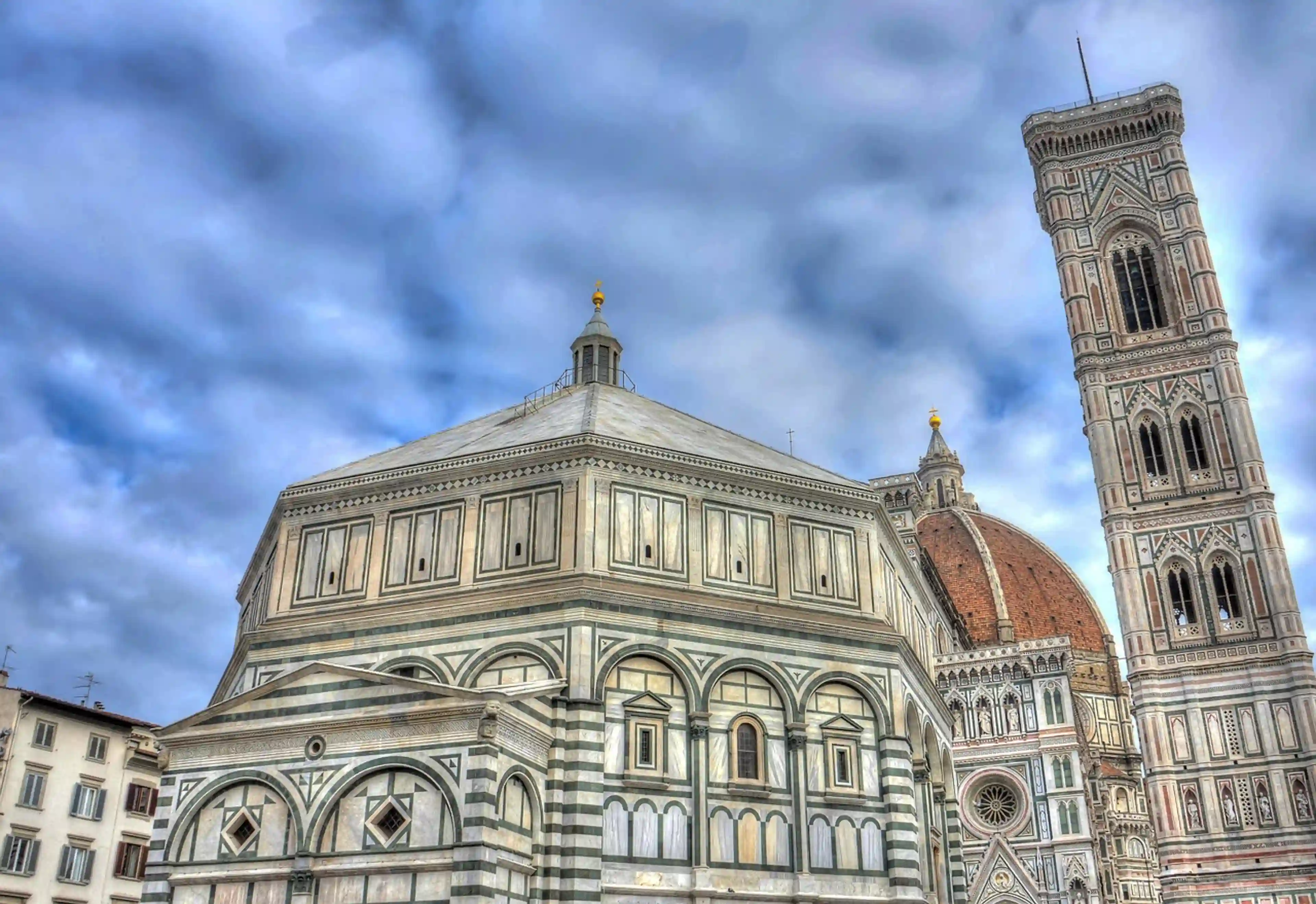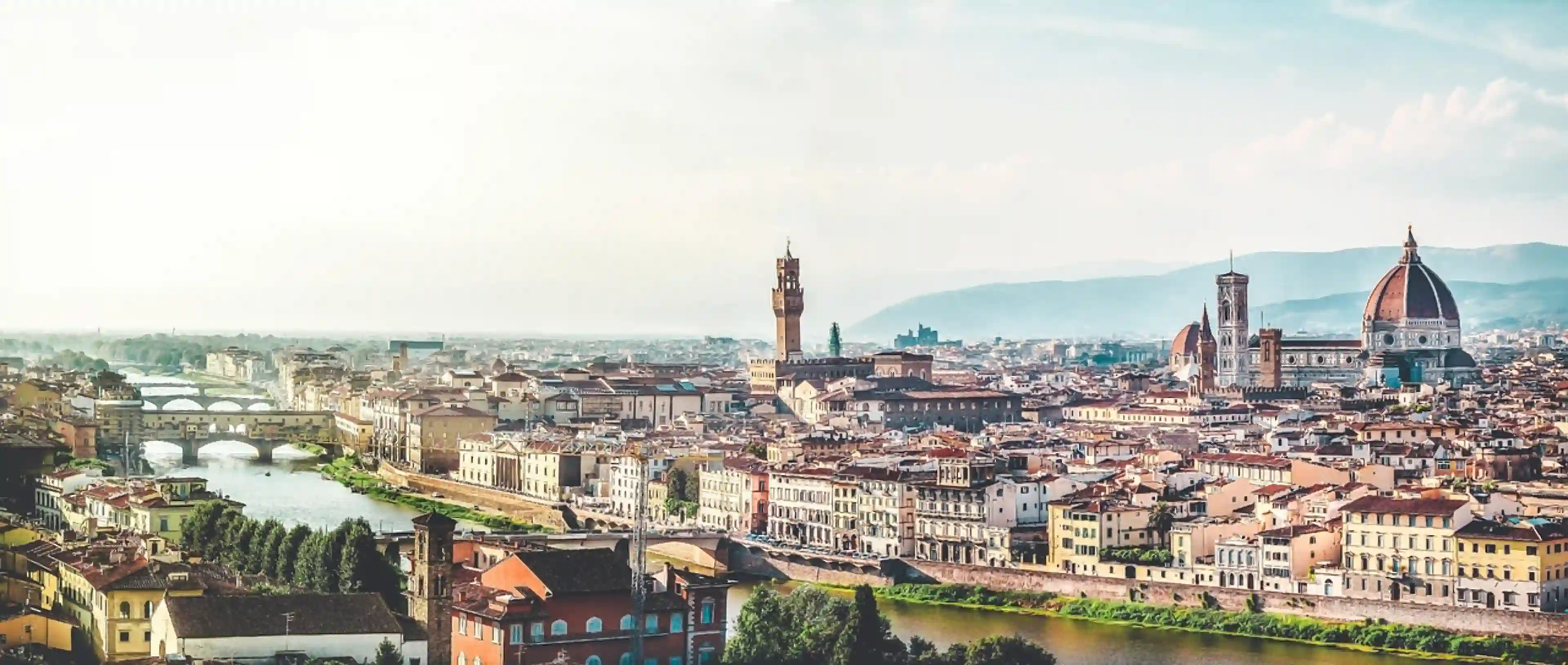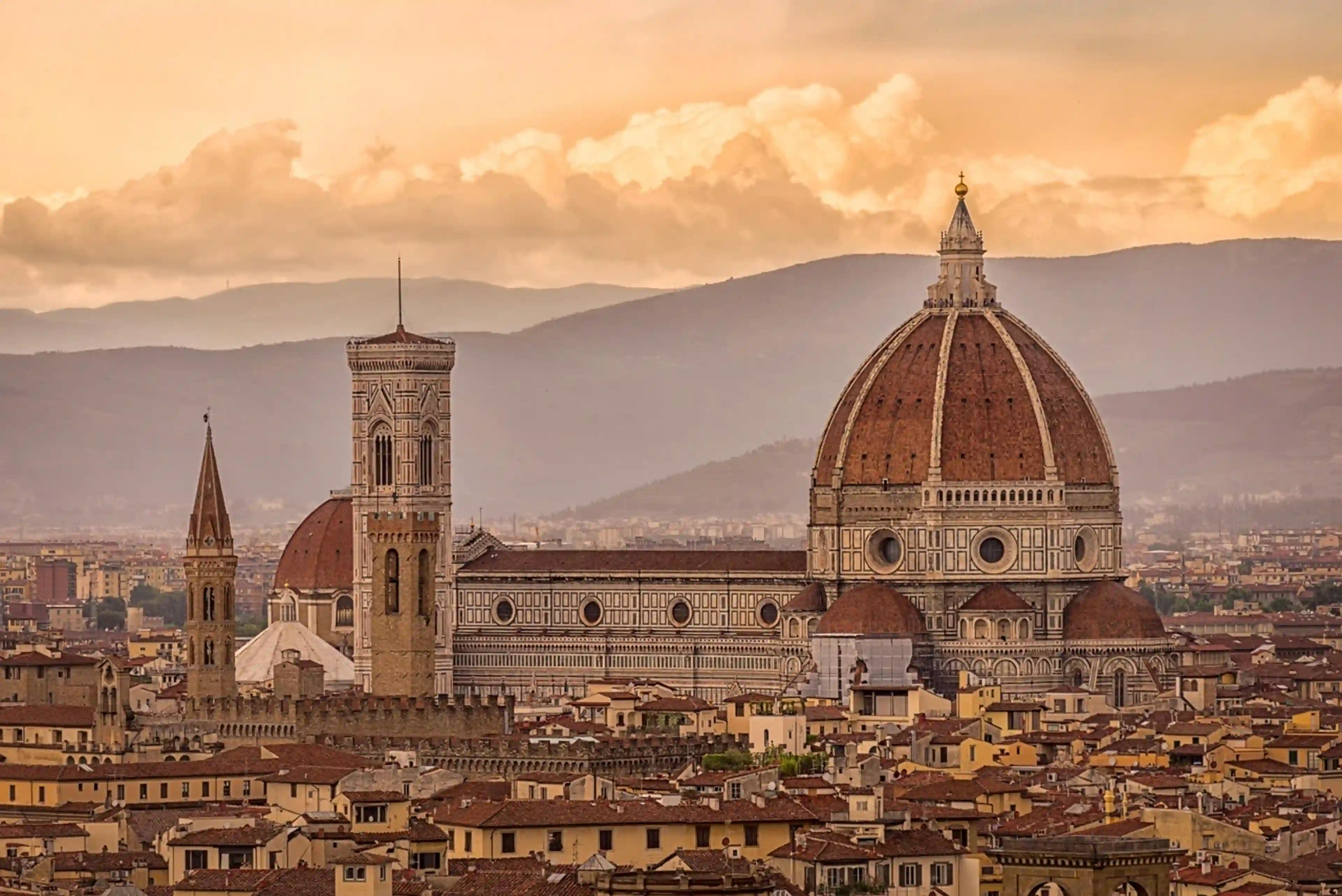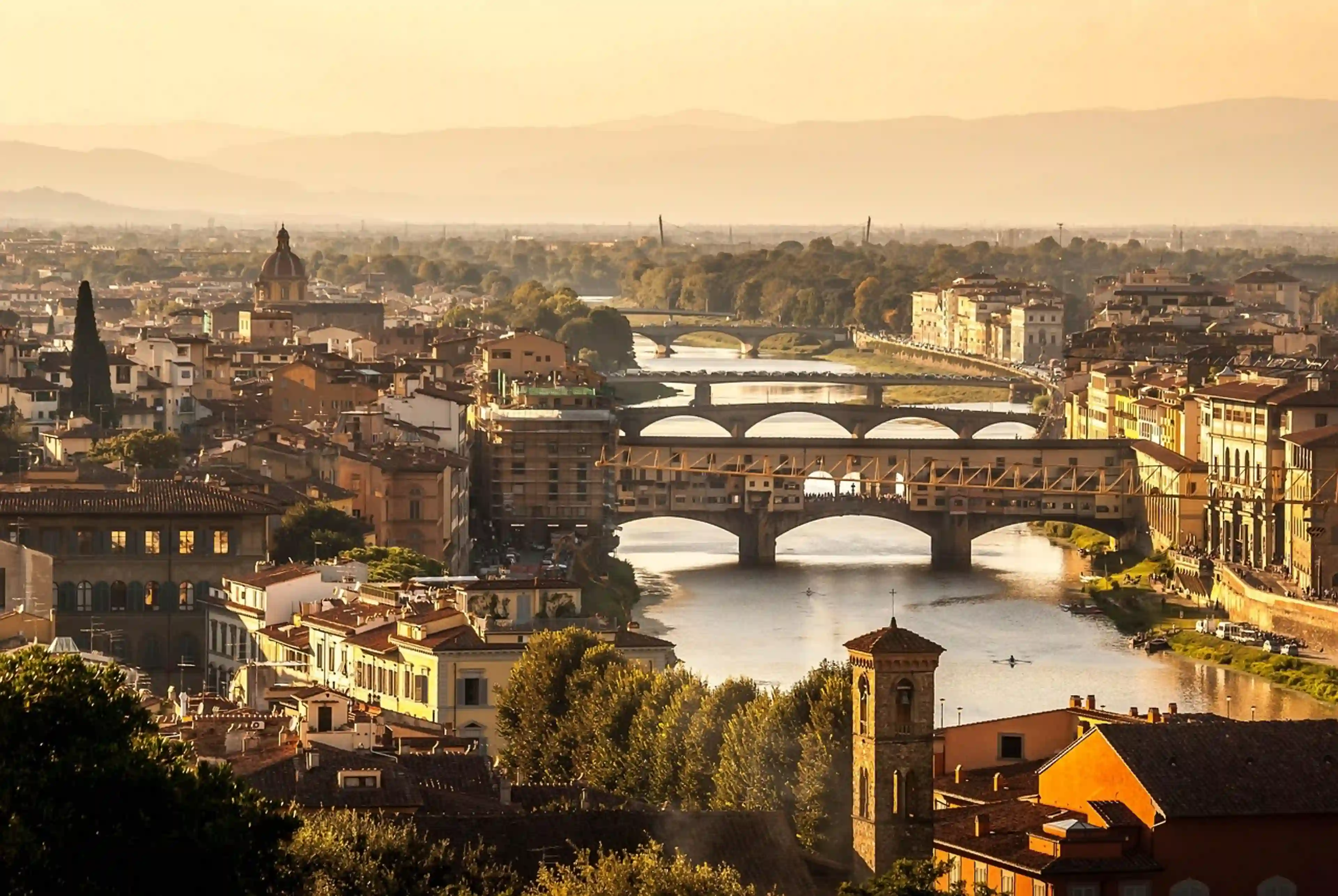Florence
General presentation
Top 50
History, culture & traditions
Travel advice
Wikipedia
Viator activities
Tiqets activities
Overview
Florence, the capital of Tuscany, is universally recognized as the birthplace of the Italian Renaissance. Inscribed as a UNESCO World Heritage site since 1982, this exceptional city of art attracts millions of visitors each year who come to admire its architectural and artistic treasures. The Duomo and its majestic dome, the Uffizi Gallery with its priceless collections, and the iconic Ponte Vecchio are just a few of the jewels that testify to its fundamental role in the history of Western art and culture.
Geographical location
Nestled in the center-north of Italy, about 270 km northwest of Rome, Florence gracefully stretches along the banks of the Arno River. The river divides the city into two distinct parts, connected by several historic bridges. The natural environment is just as enchanting as its built heritage: the gentle Tuscan hills surround the city, creating a green setting that offers breathtaking views of the urban landscape.
Atmosphere and character
The historic center of Florence, with its cobblestone streets and lively squares, exudes an atmosphere where history seems ever-present. Every street corner reveals a new architectural treasure, creating an immersive experience in the golden age of the Renaissance. This rich heritage does not prevent Florence from being resolutely vibrant and contemporary. The historic neighborhoods resonate with the conversations of locals sitting at café terraces, while a dynamic art scene and a lively nightlife demonstrate that creativity remains at the heart of Florentine identity.
Climate
Florence enjoys a climate that is between humid subtropical and Mediterranean. Summers are hot and relatively dry, with temperatures soaring up to 34°C in July. Winters, while mild compared to other European regions, can be cool with lows around 1°C in January. Rainfall is spread throughout the year, with a notable increase in November and December. This climate contributes to the lushness of the surrounding landscapes and allows for outdoor enjoyment of the city for much of the year.
Best season to visit
Spring (from March to June) and autumn (from September to November) are the ideal times to discover Florence. These intermediate seasons offer mild and pleasant temperatures, between 15°C and 25°C, perfect for strolling through the streets and visiting landmarks. The light is especially flattering for photography, and tourist crowds are moderate compared to the summer.
Summer, although festive and lively, can be exhausting due to the intense heat and the high concentration of visitors. Winter, quieter, reveals a more authentic and accessible Florence, with advantageous accommodation rates, despite some chilly and rainy days.
Access
Florence has several practical access options:
By air: Amerigo Vespucci Airport (FLR), located just 6 km from the center, is connected to numerous European cities. From the airport, reaching the historic heart is simple and quick: 15 minutes by taxi or 20 minutes via the T2 tram line.
By train: The central Santa Maria Novella station, ideally located in the city center, is a major railway hub with frequent connections to major Italian cities (Rome, Milan, Venice) and European destinations.
By road: The A1 (Milan-Rome) and A11 (Florence-Pisa) highways effectively serve the city. However, since the historic center is largely pedestrianized, it's wise to leave your vehicle in one of the peripheral parking lots and continue by public transport.
Internal transportation
The historic center of Florence, concentrated in a relatively small area, is best explored on foot. This walk allows one to capture the essence and charm of the city. For longer journeys or in case of fatigue, several options are available:
Buses: The ATAF network efficiently serves the entire metropolitan area. Tickets can be easily bought at kiosks, tobacco shops, or on board with a small surcharge.
Tram: Two main lines facilitate travel between the center and the outskirts, offering a modern and quick alternative.
Taxis: Easily recognizable by their white livery, they can be hailed in the street or ordered by phone.
Bicycles: Although Florence has some bike lanes, their discontinuity calls for caution. This option remains appealing for experienced cyclists looking to explore the city at their own pace.
Top 50
Wikipedia
Viator activities
Tiqets activities



